While most visitors associate St. John, USVI, with white sand beaches, there’s so much more to this small island than meets the eye. One thing you might not be aware of is the dozens of hiking trails that can be found throughout the island, especially in the Virgin Islands National Park area.
Going on a hike in St. John is an excellent way to get a good workout and explore parts of the island you won’t see from your resort in Cruz Bay or Coral Bay. You can find everything from relatively flat walking paths to rocky trails overlooking beautiful beaches and running through old ruins. You won’t find as many hiking opportunities in the other U.S Virgin Islands of St. Thomas or St. Croix.
We’ve put together a guide on the best hiking trails in St. John to help you make the most of your time on this breathtaking island. We included the difficulty level and distance for each hike.
1. Ram Head Trail
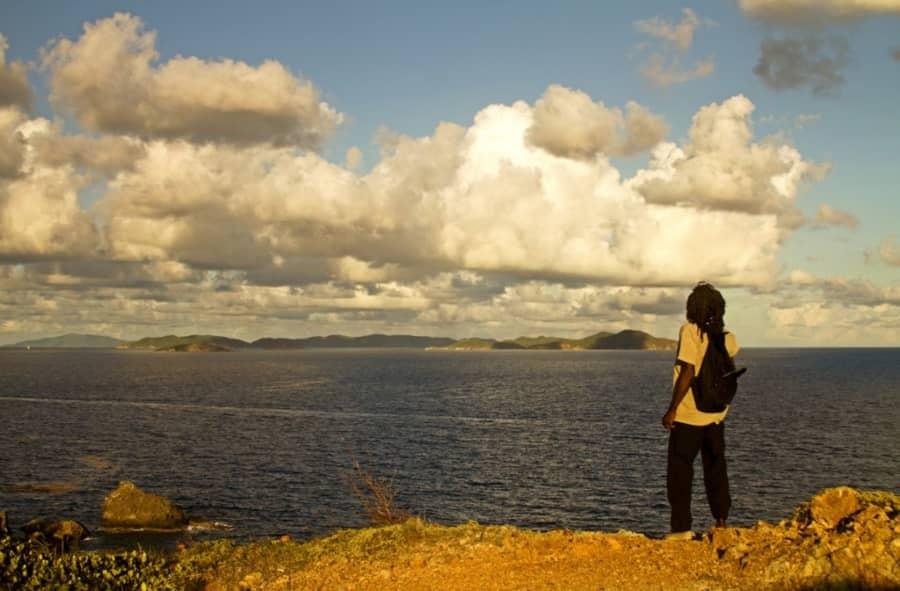
Distance: 2 miles
Time: 1 hour
Difficulty: Moderate
Beginning at the remote eastern side of Salt Pond Bay Beach, the Ram Head Trail was once a hiding place for runaway slaves. Nowadays, this moderately challenging hike is a favorite amongst tourists and locals alike.
The path starts relatively flat, traversing pebbles and dried coral along the bay’s shore. From there, it’s about a 100-yard walk to the trailhead. Once the hike officially begins, you’ll climb several hundred feet before descending to sea level at Blue Cobblestone Beach.
As you hike, you can see all kinds of native flora and fauna. This includes wild goats, whelks, centuries-old Lignum vitae trees, and flowering barrel cacti. If you’re up for snorkeling at the beach, it’s not uncommon to see green sea turtles and starfish among its Caribbean waters.
Be aware that there’s very little shade on this route. Therefore, try to hike when the sun is not out. Otherwise, make sure to bring lots of water and wear sunscreen.
2. Lind Point Trail
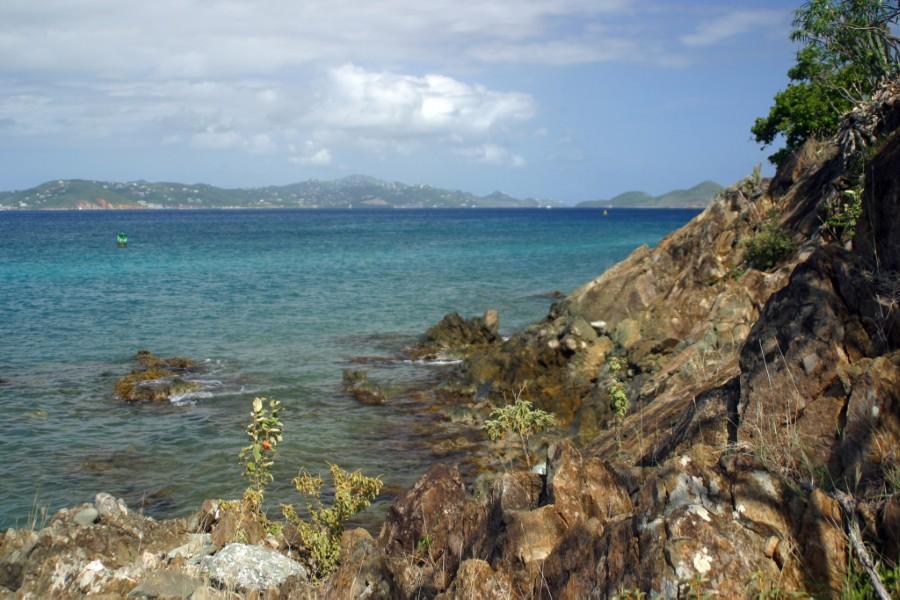
Distance: 2.25 miles
Time: 45 minutes
Difficulty: Moderate
If you’re coming to St. John without a car, check out one of the island’s most accessible paths, the Lind Point Trail. Starting behind the Cruz Bay Visitor Center, it traverses the Lind Point Battery Outlook and provides access to swimming spots at Salomon Bay and Honeymoon Beach.
The Lind Point Trail provides two paths, where the lower path stays at sea level as it hugs Cruz Bay and the surrounding beaches. This is probably the best option if you’re weighed down with snorkeling gear.
On the other hand, if you’re ready for a challenge, the upper trail takes you around switchbacks to the 140-foot-high Lind Point Battery Outlook. From there, you can head to Salomon Bay Beach via the spur trail of the same name.
Regardless of which path you take, the hiking trail is filled with hundreds of unique plant species, including cactus scrub, air plants like bromeliads and anthuriums, and the elusive night-blooming cereus.
3. Reef Bay Trail
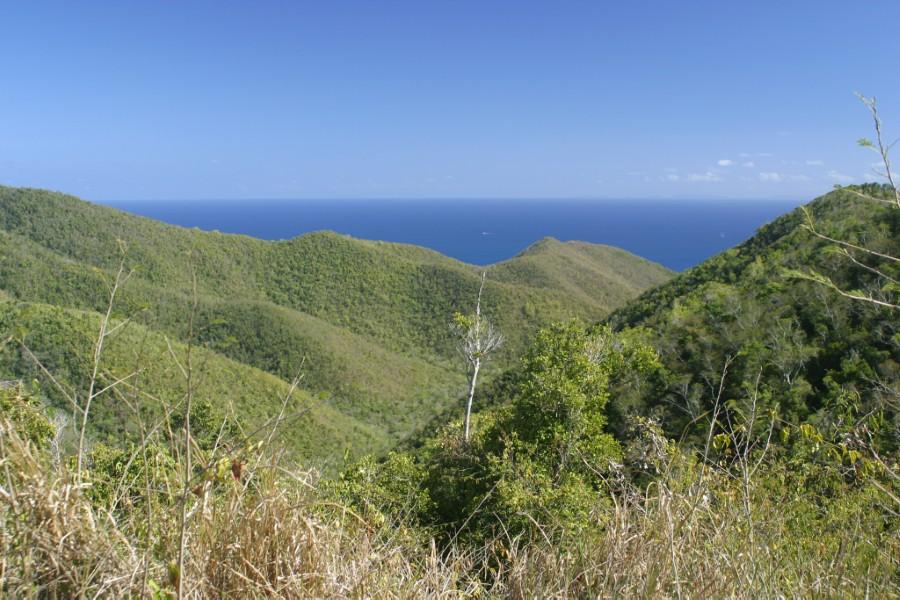
Distance: 2.4 miles
Time: 2 hours
Difficulty: Moderate
This is one of St. John’s most popular hiking trails, the Reef Bay Trail. It’s one of the most challenging hikes, but the views are worth the effort and is filled with a rich history.
The Reef Bay Trail measures 2.4 miles one way. It descends 937 feet from its starting point at Centerline Road to the bottom of the Reef Bay Valley. In between, it curves around the abandoned Reef Bay Sugar Factory and Genti Bay Beach.
During this hike, you can explore the ruins of old plantations, see mysterious Petroglyphs made by the Tainos (St John’s original inhabitants), waterfalls, and reach the Reef Bay Beach.
Seasoned hikers can plan their own path, while less experienced ones can opt for a guided tour run by the National Park Service. In addition to expert guidance, this service also includes transportation from the National Park Visitor’s Center to the trailhead.
Make sure to bring plenty of water and food. It’s also a smart idea to wear comfy hiking shoes since part of the trail can be rough.
4. Johnny Horn Trail
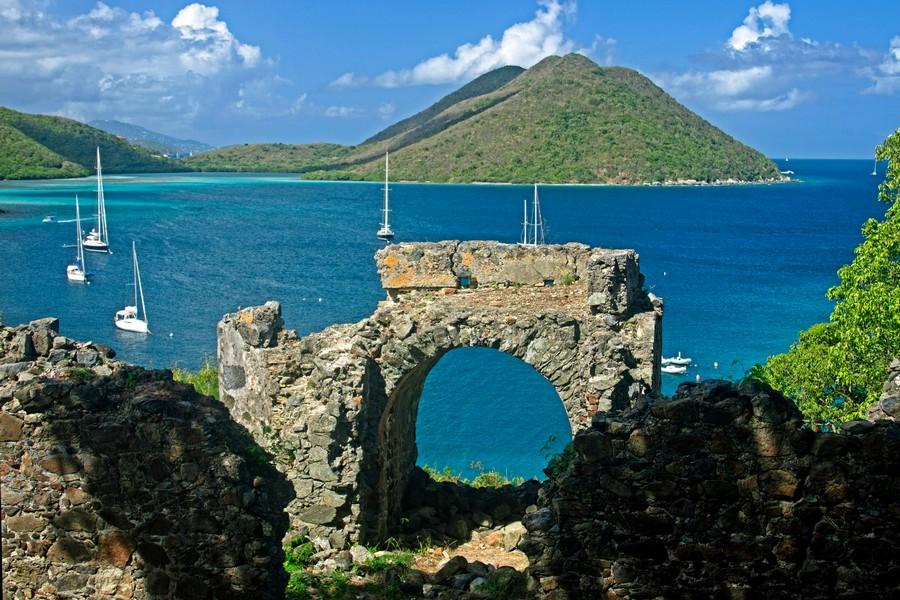
Distance: 1.8 miles
Time: 2-3 hours
Difficulty: Difficult
Named after Johan Horn, a high-ranking 18th-century bookkeeper and merchant, the Johnny Horn trail links Waterlemon Bay beach with the Emmaus Moravian Church.
The hike, which ends in Coral Bay, measures 1.8 miles and traces a mountain ridge through a closed-canopy forest in the Virgin Islands National Park. It’s moderately strenuous thanks to the 400-foot elevation gain. But don’t worry, your efforts pay off with magnificent views of Waterlemon Cay and the Sir Francis Drake Channel.
While the viewpoints are the main attraction of this hike, don’t overlook the fascinating historical ruins along the spur trails.
One path leads to the site of the old Danish guardhouse, a stone structure with a lookout over the Fungi Passage and the Narrows. Another leads to the Murphy House ruins, the former estate of James Murphy, a merchant from nearby St. Thomas.
Boss Hill is the last climb of the hike and provides views of Hurricane Hole and Virgin Gorda of the British Virgin Islands. From there, the path descends steeply before dropping in front of the Moravian Church, a Protestant sanctuary constructed in 1782.
5. Bordeaux Mountain Trail
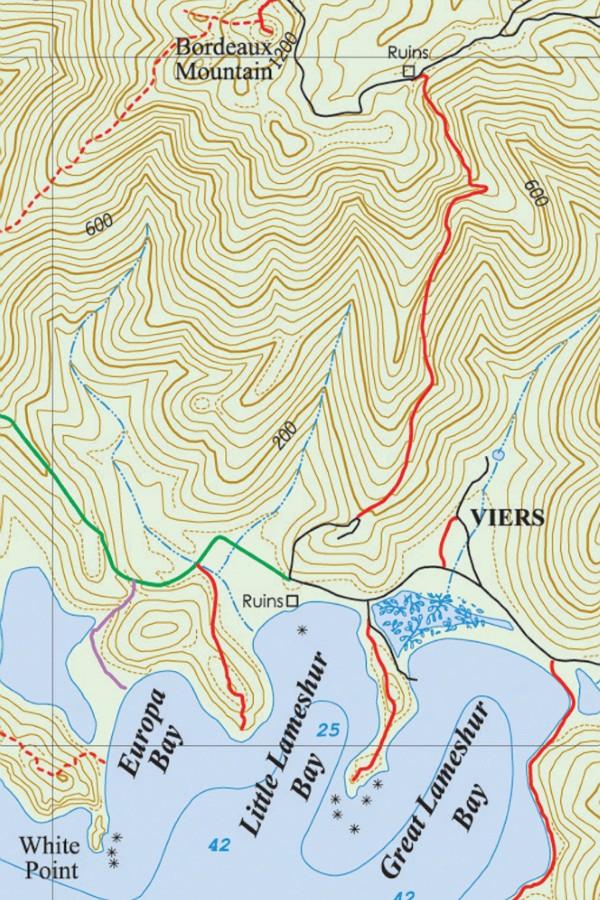
Distance: 1.2 mile
Time: 1.5 hours
Difficulty: Difficult
The elevation at the top end of the Bordeaux Mountain Trail is more than 1000 feet. The trail is only one mile long, with an additional 0.2-mile track down from the ranger’s house to the bay.
Going down is easy as the trail is well-maintained and in excellent condition. It’s obviously steep, to put it mildly. Most of the trail runs straight down the mountainside, with a potential for quick and severe erosion with every rain.
The trail crews have mitigated this hazard by creating numerous swales across the trail, sending rainwater off to the sides and into the bush rather than allowing it to run down the trail.
On the upper elevations, the Bordeaux Mountain Trail runs through a shady forest. As the trail descends, the environment changes to dry forest and then scrub with way less shade. Along the trail, travelers can experience birds singing, beautiful trees, and outstanding views.
Going up is another story. Let me just say, pace yourself and bring plenty of water. It’s one mile from the trailhead to the intersection of the trail and the road to the ranger’s residence.
Lameshur Bay lies about a quarter mile further down the hill, where there are some nicely cleared ruins and the entrance to the Lameshur Bay Trail.
6. Francis Bay Trail
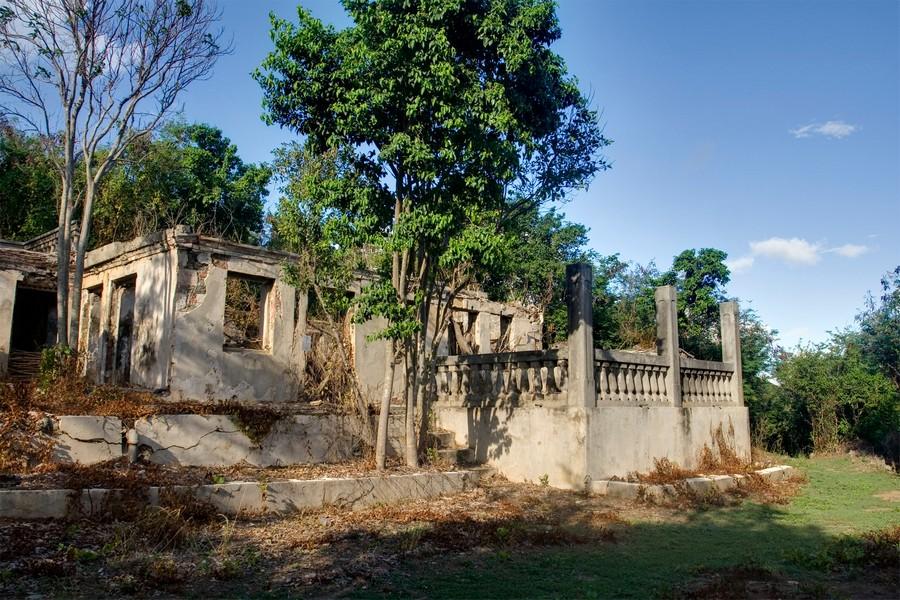
Distance: 0.7 miles
Time: 0.5-1 hour
Difficulty: Easy
If you’re in the mood for a quick jaunt that won’t strain your hamstrings, we recommend checking out the Francis Bay Trail.
Although the path is relatively short, it’s jam-packed with historical sites and lovely landscapes. You can pass by the Mary Point Great House ruins, an early 19th-century manor that served as the summer estate for the Creque family.
A handicapped-accessible boardwalk leads to a lookout point over Francis Bay Pond, a saltwater oasis perfect for birdwatching. Continuing along the trail, there is another birdwatching spot before reaching the north end of Francis Bay.
To access the Francis Bay Trail, head to the parking area on Mary Creek Road. It’s located at the end of the road’s paved section. Since this hike is short and mostly flat, you don’t need to bring much in the way of supplies.
7. Leinster Bay Trail
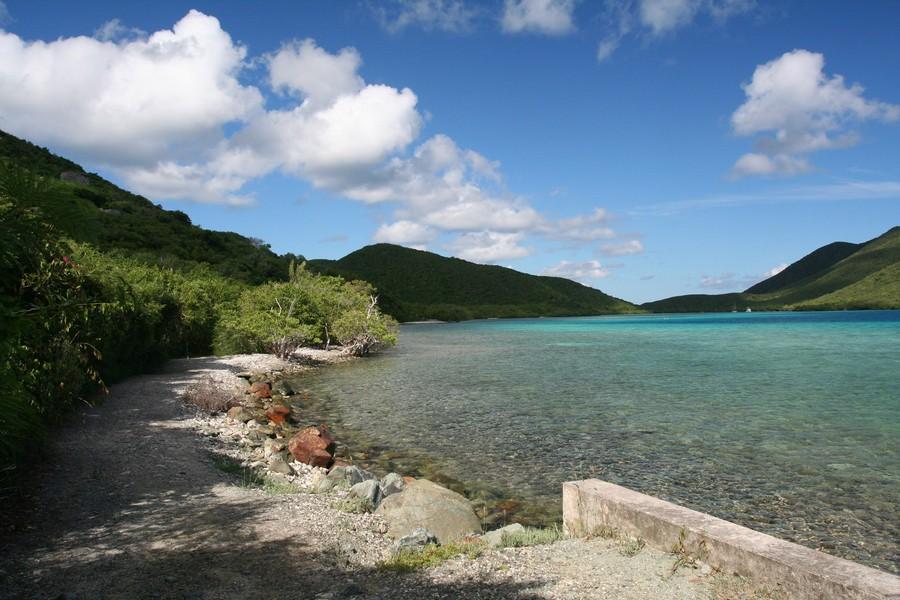
Distance: 0.8 miles
Time: 45 minutes
Difficulty: Easy
Leinster Bay Trail traces the shoreline of Leinster Bay to Waterlemon Bay, one of St. John’s most celebrated snorkeling locations in all of the Virgin Islands National Park.
This St. John hiking trail measures 0.8 miles each way, making for a quick yet rewarding hike. The relatively flat path used to be accessible to cars. However, previous natural disasters have made it strictly pedestrian.
The trail passes by several historical locations, including Waterlemon Cay, an island that was once the site of duels, and the ruins of the Leinster Bay Plantation.
In addition to the built sites, there is an abundance of plant and animal life. Keep your eyes peeled for the gnarly Maho trees, thick mangroves, and sneaky land crabs.
Perhaps one of the most amazing parts of this hike is the scenic overlooks it offers. On a clear day, the ocean sparkles a dark royal blue, and the lush surrounding islands look close enough to touch.
8. Peace Hill Trail
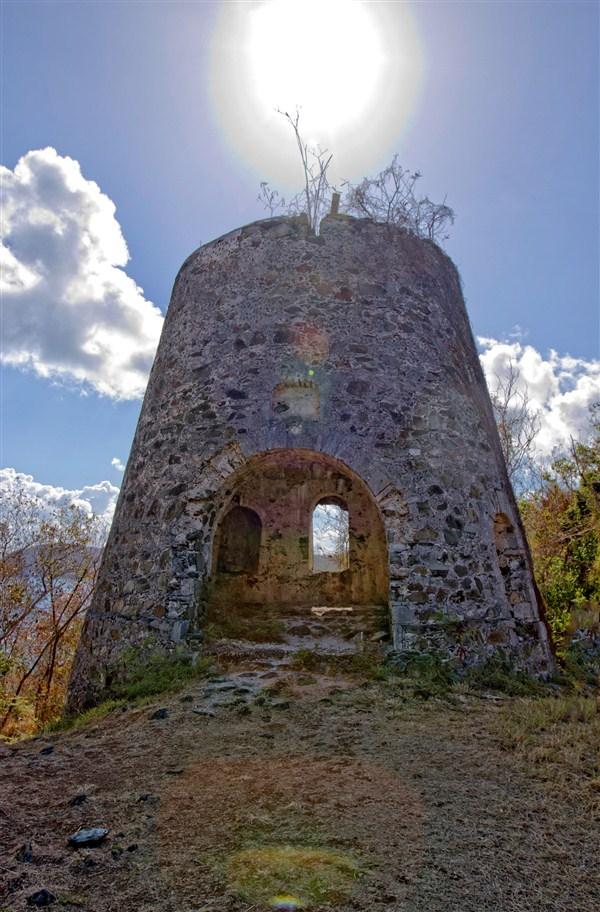
Distance: 0.2 miles
Time: 5-10 minutes
Difficulty: Easy
Peace Hill is aptly named. From the hilltop at the end of the headland separating Hawksnest and Denis Bays, you can enjoy an absolutely spectacular view of the north coast of St. John and beyond.
Years ago, a windmill was powered by the constant trade winds that passed unimpeded over the hill. The semi-restored ruin now provides a dramatic backdrop to the unique tranquility of the hilltop.
The trail to Peace Hill begins at the parking area located about a half mile east of Hawksnest Beach and leads to the top of Peace Hill. It’s a short easy walk, only about a tenth of a mile on a well-maintained track with a moderate grade.
About 20 yards up the Peace Hill Trail, a 0.2-mile spur trail on the right leads to the western end of Denis Bay near Perkins Cay. This is not an official Virgin Islands National Park trail and is not regularly maintained, but it’s still walkable.
9. Cinnamon Bay Trail
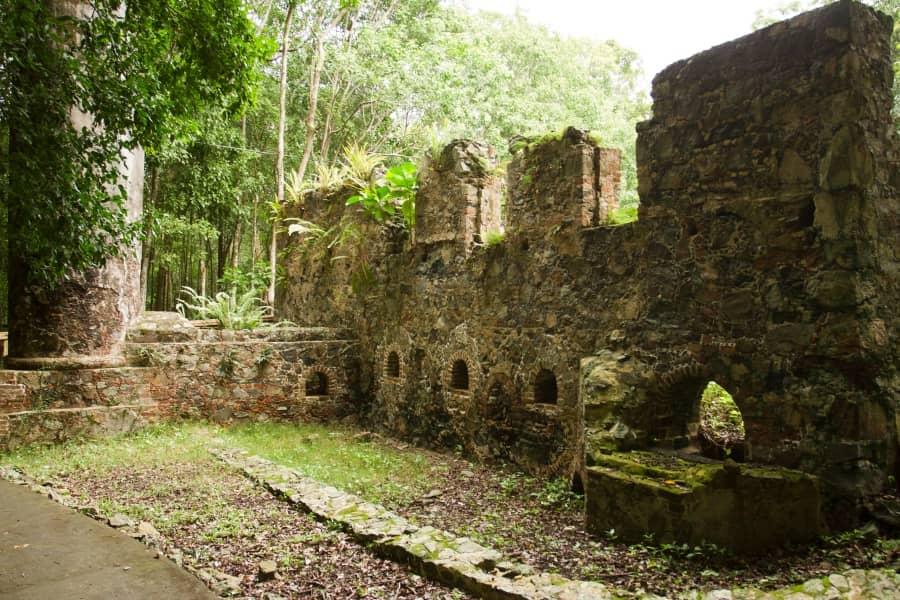
Distance: 0.5 miles
Time: 30 minutes
Difficulty: Easy
Represented on the Cinnamon Bay Trail are three important stages of the economy and life on St. John in days gone by. The sugar industry, the emergence of bay rum, and the subsistence economy that existed from the end of slavery to the beginning of the present-day tourism economy.
The old sugar works are in good condition, and you can see the remains of the horse mill where the sugar cane was ground up and juiced. There is also the factory where the juice was boiled down and evaporated to produce crude sugar and molasses. These were stored in the building that once existed, where the stone columns are alongside the road.
The bay rum distillery lies in the back of the sugar factory, and the aroma of the bay trees fills the air from the surrounding forest. On the other side of the gut, you can find the stone bake oven and the old estate house, which was destroyed by a hurricane and rebuilt in the subsistence farming days.
You can pick up the half-mile trail that leads through the forest, crosses the gut, and heads back to the plantation ruins. There is interesting flora on the trail, such as guava berry, hog plum, calabash, and mango trees, as well as one of the few cocoa trees still in existence on the island.
After hiking, you can make a quick visit to Cinnamon Bay Beach and perhaps decide to camp the night at the Cinnamon Bay Campground.
10. Caneel Hill Trail
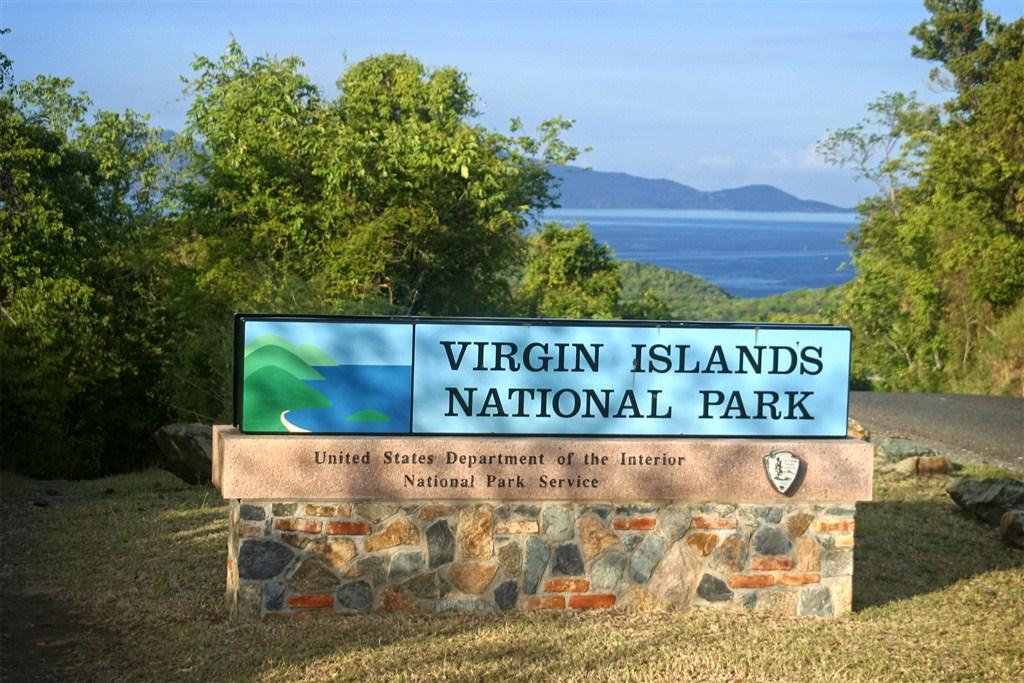
Distance: 4 miles
Time: 3 hours
Difficulty: Difficult
If you’re looking for an outdoor alternative to your normal aerobic workout, you might want to give the Caneel Hill Trail a try. There are two ways to hike it.
The longer way is to start from the beginning of the Caneel Hill Trail, which can be found about 20 yards past the Mongoose Junction parking lot in Cruz Bay. From there, the Caneel Hill summit is about 0.8 miles with a rise in elevation of 719 feet.
The somewhat shorter way is to begin the hike at the parking area for the Caneel Hill Spur Trail, located just off North Shore Road (Route 20). It’s at the top of the first hill, just past the Asolare Restaurant and Estate Lindholm, where the main road intersects with the road to the Virgin Islands National Park Housing.
This will cut 200 feet of elevation and about a tenth of a mile of distance off the previous option. Either way, the hike is a steep climb. You might be able to complete the climb in less than 20 minutes. Just about 100 yards from the top, there’s a bench with a good view to the north.
Continuing on to the summit, you can find a viewing platform with spectacular vistas and refreshing breezes. This is an excellent place to rest, stretch and hydrate before your descent. With a beautiful and natural outdoor environment, the hike up to the top of Caneel Hill is rewarding and a worthwhile change of pace.
11. Water Catchment Trail
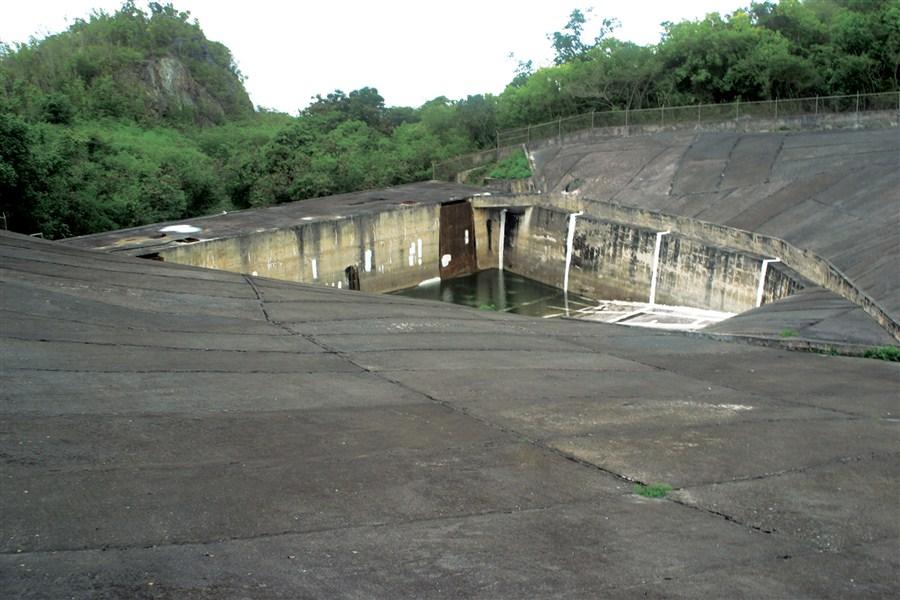
Distance: 0.8 miles
Time: 1 hour
Difficulty: Moderate
The less than a mile Water Catchment Trail runs between Centerline Road and North Shore Road. For a long time, the trail was not maintained and could be rugged going, but it was improved by volunteers from the Friends of the Park and is now in good condition.
The Water Catchment Trail, as its name implies, provides access to the Caneel Bay Water Catchment. The trail is also useful for making a trail loop with the Caneel and Margaret Hill Trail by utilizing one of the two spurs connecting the two trails or where the trails intersect at the Centerline Road trailhead.
The dry forest environment is beautiful and rarely traveled, and you can be relatively certain that you won’t find other hikers. A short spur trail lying about a quarter mile from the trailhead on Centerline Road leads back to the Caneel Hill Trail. This also provides easier access to the Margaret Hill Overlook.
The Water Catchment Trail passes an old stone retaining wall and a concrete drainage gutter that used to feed the reservoir with rainwater coming from the mountain valley via the natural gut.
The catchment is an extensive concrete slab that catches rainwater, leading it into a basin for temporary storage. From there, the water is piped through the force of gravity to the Caneel Bay Resort.
12. L’esperance Trail

Distance: 2.5 miles
Time: 1-2 hours
Difficulty: Moderate
The L’Esperance trail rose from being a less-known obscure trail in St John to now being quite popular. This is a really beautiful hike, something you realize right from the start of the trail, where the road descends following the lush Fish Bay Gut.
It’s an easy, comfortable walk (at least downhill) with beautiful foliage and rock formations accompanied by the sounds of songbirds and water trickling in the gut.
When I hiked it, a full-sized buck stood on the trail just about 20 yards away. It started at me for an instant or two before gracefully bounding off into the safety of the forest. Another time I saw a wild boar in that same area.
Just about a tenth of a mile from the trailhead, you come to an old stone bridge leading to the ruins of the recently cleared L’Esperance Estate. About a mile further on, there are two short spurs leading to Estate Seiban, also cleared by volunteers.
Seiban is the location of St. John’s only Baobob tree that at one time was so lost in the bush that many disputed its very existence.
There’s a beautiful bay rum forest, an old daub and wattle cottage full of old bottles, the ruins of Estate Mahlendahl, as well as access to the Reef Bay Trail and the Camelberg trails.
13. Petroglyphs Trail
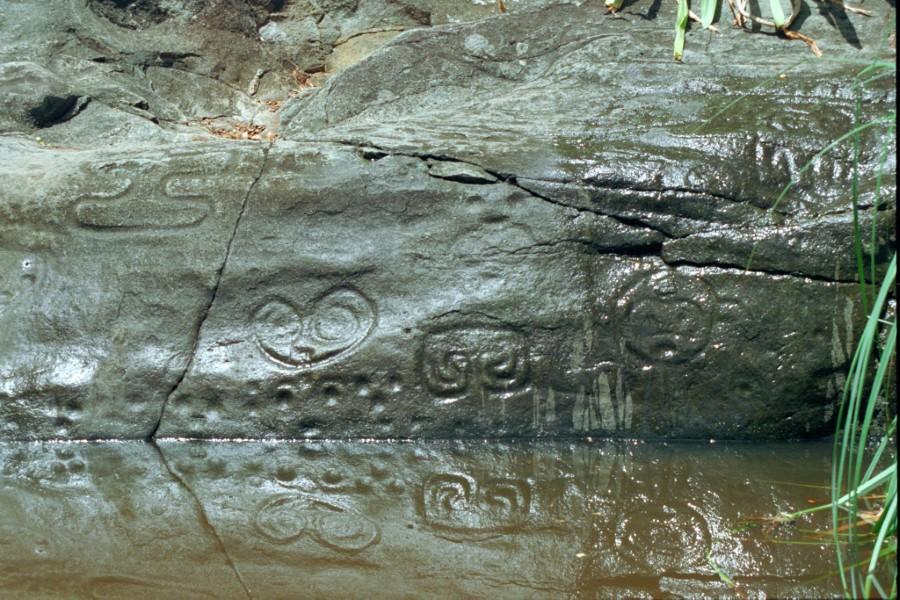
Distance: 2.4 miles
Time: 2 hours
Difficulty: Moderate
In the lower section of the Reef Bay Valley, there is a freshwater pool fed by an intermittently flowing stream called the Living Gut. It’s surrounded by large, smooth rocks onto which dozens of drawings and symbols have been carved. These rock carvings, as well as the pool itself, are known as the petroglyphs.
High above the pool, a waterfall cascades down a forty-foot cliff where strangler figs and wild orchids have taken root using cracks and crevices in the rock face as footholds.
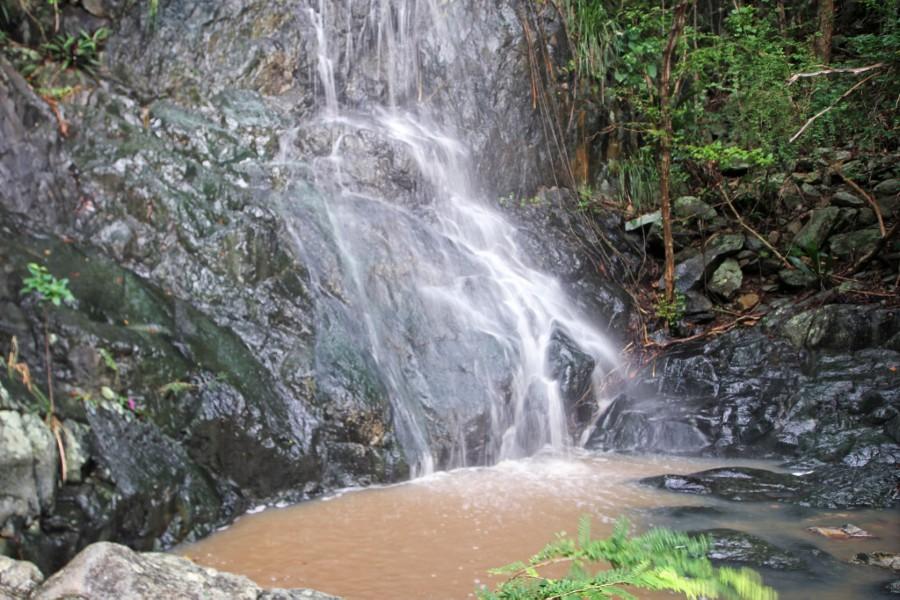
The freshwater provides an environment for shrimp, frogs, small fish, dragonflies, and hummingbirds. At night bats zip back and forth above the pool, searching for a cool drink and snack.
The natural moisture of the area promotes lush, tropical vegetation, and the ambiance is serene and tranquil. There is an air of magic and spirituality here that undoubtedly inspired the unknown artists who long ago created these carvings.
If you’re coming down the Reef Bay Trail from Centerline Road, the Petroglyph Trail will head off to your right at a point 1.6 miles from the trailhead. Coming up from the sugar mill, it’s 0.8 miles to the Petroglyph Trail, which will be on your left.
From the intersection of the two trails, it only requires an easy half-mile walk over flat terrain in order to reach the petroglyphs.
The petroglyph-lined pool lies at the end of a spur of the Reef Bay Trail. It has become a popular place for hikers to pause and contemplate their surroundings while enjoying a snack or picnic lunch.
